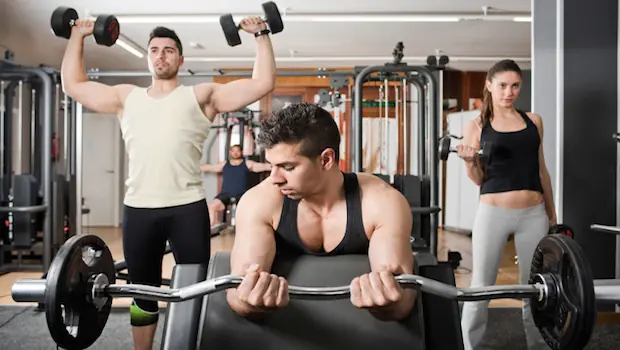
Have you ever seen someone at the gym doing the exact opposite of what you were taught? Chances are, one of you is doing things wrong.
But how do you know who's right? And who can you trust when it comes to fitness myths and facts?
Ben Cohen, an accomplished collegiate strength coach and founder of Ben Cohen's Athletic Advising offers the truth about several fitness myths, and what you need to know to ensure your workouts are safe and effective.
1. Spot Reduction Works
False.
Trying to lose your gut by just doing sit-ups is futile. One million ab exercises a day won't flatten a stomach that is covered in layers of fat.
Burning calories through frequent, consistent cardiovascular exercise helps shed belly fat. Combine this with an improved diet, and you'll create a calorie deficit, which trims the belly and other areas of your body.
Eventually, certain exercises will help tone the muscles, which will become visible when the excess fat is gone.
More: 6 Core Exercises for Six-Pack Abs
2. You Have Lower, Middle and Upper Abs
It's all one muscle.
To effectively target regions of your erectus abdominus, you need to pre-fatigue certain parts of it. With a crunch series, for instance, you'll need to fatigue the top of your abs, then the middle in order to get to the bottom.
More: 7 Exercises to Tone Your Lower Abs
3. Deep Squats Are Bad For Your Knees
There's not a lot of evidence that links squats and knee pain.
When squatting, you should keep the weight light enough so you can work through a full range of motion. The best squat is one in which you can sit your butt to your heels without weight.
Have you ever seen a baby bend down to pick something up? They go all the way down until their diaper touches their heels. We lose that ability as we age and stiffen up. Work towards getting back to that deep squat, then squat deeply with moderate weight. This won't hurt you so long as you maintain proper technique.
More: How to Achieve Proper Squat Form
4. Deadlifts Are Bad For Your Back
People don't hurt their backs just because they're doing deadlifts. They hurt their backs while deadlifting when they sacrifice technique to move weight.
There are ways to compromise your form to get the weight up, but they are not beneficial in the long run.
More: How to Do a Deadlift Safely
5. You Need to Load up on Protein After Lifting
Your body can only digest about 12 to 15 grams of protein in a meal.
With a good diet, you shouldn't have to supplement protein unless you're a serious body builder. Any extra protein will either be excreted or just hang around your waist line as extra calories.
More: The Whole Story on Protein
6. Lifting Weights Makes Women Bulky
Considering females have 1/20th to 1/30th of the testosterone levels that men have, this is a false belief.
By lifting more weight, females don't have the testosterone to support serious muscle mass growth. Now, eating 10,000 calories a day and performing intense strength training workouts will bulk a female up, but that should be avoidable.
People also commonly think the average female doesn't need to lift heavy weight, but then you see them trying to haul 50-pound bags of dog food in one hand and a full-sized child in the other. Lifting heavy will benefit women in many areas of their lives.


